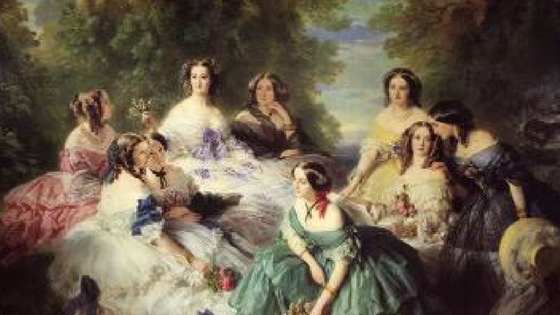Fashion was not easy in the mid-19th century, and it was not for the faint of heart (although fainting was not uncommon). Movies like Mrs. Brown, The Age of Innocence or Gone With the Wind all have beautiful examples of the fashions of the day. In the painting above by Franz Winterhalter, Princess Eugenie and her ladies in waiting did one of the only things ladies in these beautiful garments could do, recline and rest. The waspish waists created by ‘’tight lacing,’’ as it was called then, really took a toll on the health of the women who wore this fashion. This type of corseting could even change the alignment of the internal organs and effect fertility.
In the 1850’s an alternative to tight lacing emerged. Through a group of women in professions like healthcare and followers of the early women’s suffrage movement, a style developed that literally gave women breathing room. On top, in consisted of a very fitted undergarment on top worn in the place of corseting. Wide legged pants made from fashion fabric were worn beneath a shortened skirt. This allowed for more freedom of movement going from place to place. It even allowed more women to consider careers.
The pants/dress combinations were known in some circles as Turkish Dress and began to be seen outside the home in the mid 1850’s. One famous wearer, temperance journal editor Amelia Bloomer, wore these types of outfits when she spoke. She also described it in her journal, and gave instructions on how to make it. In a few months the press dubbed it “The Bloomer Dress.’’
Here’s a quote from another journal of the time on this ‘’reform’’ dressing:
“And now I’m dressed like a little girl, in a dress both loose and short,
Oh with what freedom I can sing, and walk all ‘round about!
And when I get a little strength, some work I think I can do,
‘Twill give me health and comfort, and make me useful too.” — The Sibyl magazine, April 15, 1859
The Penny Rose Fabrics collection Jefferson City was inspired by textiles of the 1850’s. To be sure, some of these Bloomer Dresses may have been made in similar prints. Take a look at the complete Jefferson City collection, and imagine these intrepid women.




